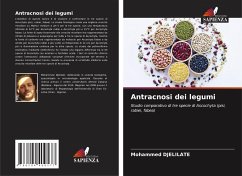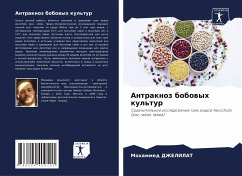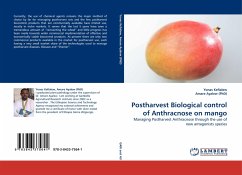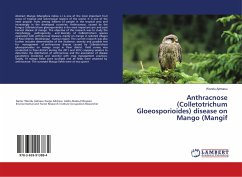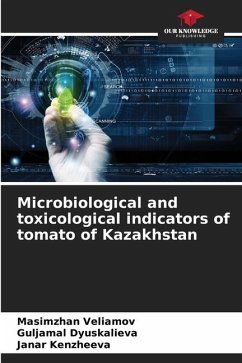
Anthracnose of legumes
Comparative study of three species of Ascochyta (pisi, rabiei, fabea)
Versandkostenfrei!
Versandfertig in 6-10 Tagen
36,99 €
inkl. MwSt.

PAYBACK Punkte
18 °P sammeln!
The objective of this work is to study and compare the three species of Ascochyta (pisi, rabiei, fabae). The physiological study reveals a better mycelial growth on Mathur medium at pH 5 for the three species, with an optimal temperature of 22°C for Ascochyta rabiei and Ascochyta pisi and 15°C for Ascochyta fabae. The source of nitrogen favorable to mycelial growth is represented by potassium nitrate and asparagine for the three species of Ascochyta while, the source of carbon is represented by Maltose for Ascochyta fabae and by Starch for Ascochyta rabiei and pisi under a photoperiod of 12 ...
The objective of this work is to study and compare the three species of Ascochyta (pisi, rabiei, fabae). The physiological study reveals a better mycelial growth on Mathur medium at pH 5 for the three species, with an optimal temperature of 22°C for Ascochyta rabiei and Ascochyta pisi and 15°C for Ascochyta fabae. The source of nitrogen favorable to mycelial growth is represented by potassium nitrate and asparagine for the three species of Ascochyta while, the source of carbon is represented by Maltose for Ascochyta fabae and by Starch for Ascochyta rabiei and pisi under a photoperiod of 12 hours for Ascochyta pisi and a continuous lighting for the other species. The study of enzymatic polymorphism by electrophoresis revealed a slight difference between the 03 species of Ascochyta with esterases and acid phosphatase. The tests of chemical control against anthracnose by the use of chemical substances incorporated in the medium with different concentrations, reveals the presence ofan inhibiting activity on the mycelial growth of the three species of Ascochyta.






